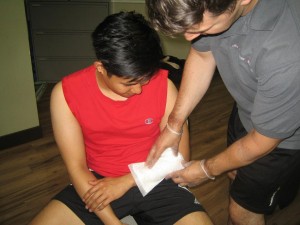There are many animals, both in land and water that are capable of delivering a painful or even a deadly sting. It is important that you know how to handle marine and reptile stings particularly from jellyfish, stingray and snakes.
Jellyfish and stingray stings
Most cases involving jellyfish stings are relatively harmless and tend to occur by accident when an individual comes in contact with the tentacles. Some varieties of jellyfish are poisonous such as the box jellyfish. As for stingray injuries, it would always require emergency care. The ideal way to prevent injury is to avoid swimming in areas where jellyfish and stingrays are abundant.
The tentacles of jellyfish releases a poison that causes skin eruption such as sore red-colored rashes that are itchy. The stings typically cause a sting mark accompanied by swelling and pain that can last for several days to weeks. Remember that both stingray and jellyfish stings can cause life-threatening allergic reactions and even shock. A stingray can deliver a bleeding wound that can end up swollen that can cause pain and even result to death.
What to do for jellyfish and stingray stings

- Remove any stingers or tentacles on the body. Make sure that you will cover your hand and avoid touching the tentacles directly.
- Immerse the jellyfish sting in vinegar or salt water. Do not use fresh water since this will increase the pain and release more toxin. For stingray stings, soak in hot water that is tolerable until the pain diminishes.
- Cleanse the sting site and apply a bandage.
- For stingray stings that bleed, apply pressure to control the bleeding.
- If the individual develops a severe allergic reaction, call for emergency assistance right away.
Snake bites
It is important to note that snake bites can be life-threatening if a poisonous snake is involved such as copperheads, rattlesnakes, coral snakes and cottonmouth water moccasins. If you see a snake, you have to slowly back away from it.
Once an individual has been bitten, ask if he/she remembered the shape and color of the snake. This will help the healthcare professionals start the appropriate treatment. If the individual was walking in water and not sure if he/she was bitten by a snake, check for puncture marks as well as swelling, redness and severe pain.
What to do if bitten by a pit viper (copperhead, rattlesnake and cottonmouth)
- Call for emergency assistance right away
- Clean the bite site. Do not attempt to slice around the bite site or suck out the venom.
- The bite site must be immobilized and keep it at the same level as the heart. Do not use a tourniquet.
- Try to calm the individual and instruct to move as little as possible in order to prevent the spread of the poison in the body.
- Avoid applying ice or flushing the wound with water.
What to do if bitten by a coral snake
- Wrap the bite site using an elastic bandage. Make sure that it is not too tight and wrap starting at the point farthest from the heart.
- Inspect the area for sensation, redness and increased skin temperature before and after applying the bandage.
- Minimal itching and swelling can be managed by applying a cold compress and over-the-counter oral antihistamines or hydrocortisone creams.
